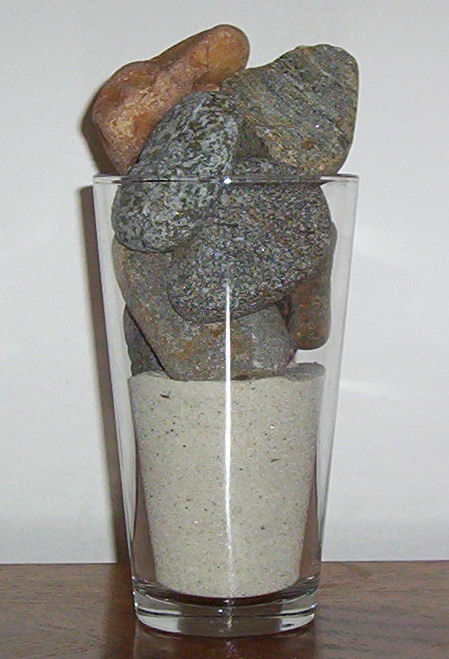The Big Rocks
Q: I see you post a lot of different things about assessments and determining starting points. What do your average assessments look like and how to you plan out what you’re going to be looking for or testing?
This, or some variation on it, is a question I get asked more than any other, so I thought I would address it in todays post. Before we get into that, though, I just wanted to say that to see a whole bunch of assessments, corrective strategies, and workouts for different parts of the body and for different injuries, check out Post Rehab Essentials, which is now on a permanently lowered price of $129. You’ll be glad you got it, and it will be the best 12 hours of videos you’ve seen since your last Lord of the Rings marathon.
I’d like to play the smart guy and sit here telling everyone I know exactly what I’m going to do and have my protocol all set out prior to meeting with someone, and that their doctor/physio/chiro/shaman has already sent me all the important information I need to know about them ahead of time with their recommendations outlined in bullet form, 12 point times new roman font, but that would be a big fat sloppy lie. Anyone who has ever had an assessment with me know I typically have about three or four sheets of paper, ask a lot of questions, make a lot of notes, and get them to go through a bunch of different “tests,” be they formal or otherwise.
Like the Joker said in The Dark Knight, “Do I really look like a guy with a plan?”
ARVE Error: id and provider shortcodes attributes are mandatory for old shortcodes. It is recommended to switch to new shortcodes that need only url
Dan John wrote an amazing book, which I would encourage everyone out there to get, titled Never Let Go, and one of the big tennets Dan talks about is incredibly profound, yet incredibly simple:
Your goal is to keep the goal, the goal
In each consult, I always begin by asking what they are looking to get and how I can help them. From there, everything I do for their assessments is geared around what their goals are. If they have pain from an old standing injury, I do a musculoskeletal assessment and movement analysis. If they want to lose weight, we do a cardio test, body composition test, and nutritional analysis. Athletes go through more movement testing, work capacity testing, and if I have the utilities, we do performance based testing. I’m not going to get someone doing a lap on the ice since I don’t have a rink in my back pocket, but I might see how they perform in a timed T-drill or something like that.
As a result, I don’t have a fixed in stone assessment I follow, although I do utilize the FMS quite a bit with my non-painful consults. I can’t really use it well if someone tells me they have pain, because that’s going to screw up their scores, and since I already know they have pain, the screen is a moot point anyway, but for anyone who does not have readily identifiable pain, it works great at giving me a lot of information in a small amount of time. It’s what I like to call “a big rock” of assessment.
I’ll paraphrase a story that was making its way around social media. Please don’t comment and tell me I’m wrong because I already know it’s off as I’m going off memory, so bear with me.
A professor standing in front of his class has a glass jar and a variety of rocks and stones and sand of various sizes, and a glass of beer. He begins by saying that the jar is your life, and begins filling the jar with the biggest of the rocks, about 4 in total, and asks the class “is the jar full?” to which the class replies yes. He then proceeds to put the smaller rocks into the jar, filling the cracks between the larger rocks, and asks again if the jar is full. This time everyone says somewhat apprehensively yes. He then dumps the sand into the jar, shaking the jar to allow more room for the sand, and asks again if the jar was full. This time everyone in the class agrees that it is in fact full.
The professor then says that the big rocks represent the important things in life, like family, friends, relationships, and value systems. The smaller rocks are important, but less than the big rocks, such as occupation, car, house, vacations, and others of that magnitude. The sand is the little things in life, such as emails, chores, Facebook, Twitter, and all the small things that can take time and adds up. If you were to put the sand in the jar first, you would have no room for the big rocks. Therefore the big rocks should always be the most important features in your life.
A student asks what the beer was for, to which the professor promptly picks it up and empties it into the jar, saying that no matter how much is going on in your life, there’s always time for a beer with friends.
With assessments, the big rocks are always the same: movement capability, work capacity, and pain. Once you identify what is the most important, work on it. The smaller rocks are important still, but not as important, such as the amount of weight the person can lift, how fast they can run, or what their body composition is. The sand is whether they have strength in individual muscles, movement in the right ranges within specific joints, heart rate zones, anxiety around certain movements, amount of soft tissue work needed, etc, etc, etc.

With each assessment, I ask myself two big questions. First, what would Phil Dunphy do. For those who aren’t fans of Modern Family, the second question would be what information do I need about this person right now to help them the most. Plain and simple.
Let’s take someone with a shoulder problem that hasn’t been diagnosed as anything major, but they’ve been dealing with it on and off for years. I would first ask them what makes it better or worse, when do they notice it the most, does it affect them at work or recreation, and have they found anything that makes it better. This can all help me zero in on whether it’s something major or something minor. Since it’s not debilitating, I would have them go through basic movements, like raising their arms in front, out to the side, scratching their shoulder blades (also known as active flexion, abduction, and the appley scratch test for those who give a damn), and see if any produced pain or more importantly any compensation patterns. If I note any, I would check out passive movements that may be affecting that pattern, which is the next part of the assessment.
I would begin passive assessments by simply taking their shoulder through its full range of motion, pain-free, and until a restriction is felt. I would check both the painful and non-painful side to see if there’s a discrepancy. From there I would ask them to move their shoulder through the full range on their own (active test) in both standing and laying on their back or stomach to see what effect gravitational loading would have in different directions. Most people should have somewhat more passive range of motion than active, but if it was a big difference or no difference, that would be cause for concern and would warrant more specific testing.
Depending on what I would be seeing, I would have a whole bucket full of different assessments I could throw at the person to see what’s making them tick. Seriously it’s a bucket that I keep in our consult offices, it says “bucket o’ assessments” on the side, and the janitors keep trying to throw it out. Aside from that, the key is focusing on what causes pain and what doesn’t, and figuring out what may be the underlying issue.
I’ve had runners who had terrible knee pain when they ran, but who could do everything else in the world without pain, which meant it was something in their running that was causing the issue. We could have spent all the time in the world working on soft tissue work, balanced structural strengthening, IMS, ART, OPP, and a whole host of other therapeutic modalities with the help of physios, chiros, physiatrists, witch doctors and voodoo priests, but if we didn’t fix the running, it would never resolve.
By focusing on the big rocks, getting the most immediate bang for your buck and seeing the best progress possible, the client will buy in to what you’re trying to do. By getting faster results and having a more clear understanding of what is immediately important, you can start a focused program that will help you see faster results, and avoid falling into the “paralysis by analysis” trap that affects so many of us.
And when in doubt, just shut up and deadlift. This one’s for you, Bret.
ARVE Error: id and provider shortcodes attributes are mandatory for old shortcodes. It is recommended to switch to new shortcodes that need only url


5 Responses to The Big Rocks